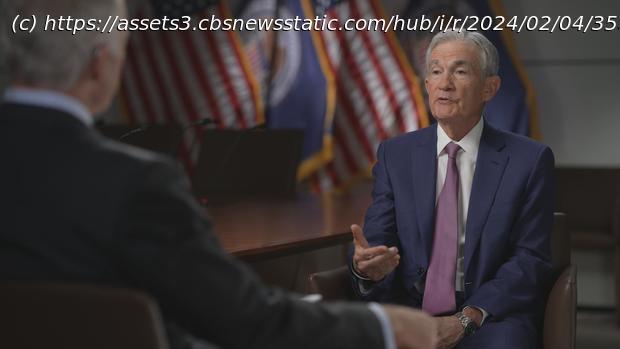Federal Reserve Chair Jerome Powell gives his thoughts on inflation risks, the economy, the timeline for cutting rates, the health of the country’s banks and more. Scott Pelley reports.
Jerome Powell, the chair of the Federal Reserve, may have just rescued the economy from inflation without throwing millions out of work. When Americans were suffering through the in 40 years, Powell’s Fed raised interest rates 11 times to cool the economy. Economists expected a recession but now inflation is tumbling while . Thursday, we met Powell for a to talk about interest rates, remaining dangers and the one question that’s on everyone’s mind.
Scott Pelley: Is inflation dead?
Jerome Powell: I wouldn’t go quite so far as that. What I can say is that inflation has come down really over the past year, and fairly sharply over the past six months. We’re making good progress. The job is not done. And we’re very much committed to making sure that we fully restore price stability for the benefit of the public.
Scott Pelley: But inflation has been falling steadily for 11 months. You’ve avoided a recession. Why not cut the rates now?
Jerome Powell: Well we have a strong economy. is going on at a solid pace. The labor market is strong: 3.7% unemployment. With the economy strong like that, we feel like we can approach the question of when to begin to reduce interest rates carefully. And we, you know, want to see more evidence that inflation is moving sustainably down to 2%. We have some confidence in that. Our confidence is rising. We just want some more confidence before we take that very important step of beginning to cut interest rates.
Inflation has fallen from just over 9% to about 3% —near the Fed’s ultimate goal of 2%.
Scott Pelley: Why is your target rate 2%?
Jerome Powell: Interest rates always include an estimate of future inflation. If that estimate is 2%, that means you’ll have 2% more that you can cut in your interest rates. The central bank will have more ammunition, more power to fight a downturn if rates are a little bit higher.
Scott Pelley: Are you committed to getting all the way to 2.0 before you cut the rates?
Jerome Powell: No, no. That’s not what we say at all, no. We’re committed to returning inflation to 2% over time. I’ve said that we wouldn’t wait to get to 2% to cut rates.
We met Powell in the Federal Reserve boardroom where this committee meets every six weeks or so to set the so- called federal funds interest rate– which influences most loans. Last week, Powell announced the rate would stay at its 23-year high, about five-and-a-half percent— for six months.
Scott Pelley: You disappointed a lot of people on Wednesday.
Jerome Powell: I can’t overstate how important it is to restore price stability, by which I mean inflation is low and predictable and people don’t have to think about it in their daily lives. That’s where we were for 20 years. We want to get back to that.
Scott Pelley: Moving too soon would set off inflation again.
Jerome Powell: You could. Or you could just halt the progress. I think more likely if you move too soon, you’d see inflation settling out somewhere well above our 2% target.
Scott Pelley: And what is the danger of moving too late?
Jerome Powell: If you move too late, then you might– you might– policy would be too tight. And that could easily weigh on economic activity and on the labor market.
Scott Pelley: Maybe a recession.
Jerome Powell: Right. And we have to balance those two risks. There is no, you know, easy, simple, obvious path.
Scott Pelley: Was the Fed too slow to recognize inflation in 2021?
Jerome Powell: So in hindsight, it would’ve been better to have tightened policy earlier.
We thought that the economy was so dynamic that it would fix itself fairly quickly and we thought that inflation would go away fairly quickly without an intervention by us. And so in the fourth quarter of ’21, it became clear that inflation was not transitory in the sense that I mentioned. And we pivoted and started tightening. And as I said, it’s essential that we did that. It was critical that we did that. And that’s part of the story why inflation’s coming down now.
Home
United States
USA — Financial Fed Chair Jerome Powell shares why central bank hasn't yet cut interest...






